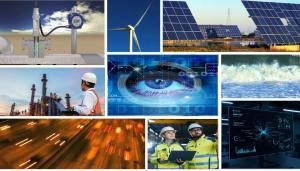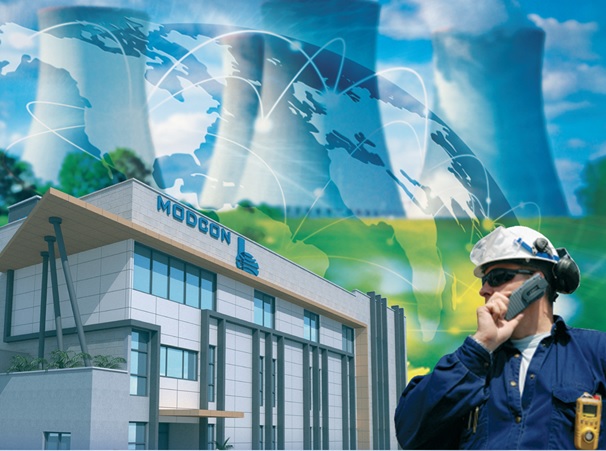Hydrogen Production Pathways and the Expanding Role of In-Situ Gas Analysis
This article examines key hydrogen production methods and explains why continuous in-situ analysis is essential for safety and reliability.
Accurate, real-time gas measurement has become a fundamental requirement across all hydrogen production pathways, ensuring safe operation and consistent product quality”
LONDON, UNITED KINGDOM, November 25, 2025 /EINPresswire.com/ -- As hydrogen gains increasing attention in global decarbonization strategies, the technologies used to produce it are undergoing rapid development and scrutiny. Hydrogen can be generated through several distinct pathways, each with its own thermodynamic characteristics, operating conditions, impurity profiles, and risks. At the same time, the expansion of hydrogen infrastructure has created a corresponding need for accurate, real-time analysis of hydrogen, oxygen and associated gases to ensure safe and efficient operation across production, purification, storage and distribution systems.— Gregory Shahnovsky, Modcon Systems
1. Steam Methane Reforming (SMR) and Autothermal Reforming (ATR)
Steam methane reforming remains the most widely used method of hydrogen production. In SMR, methane reacts with steam over a nickel-based catalyst at temperatures of 800–950°C and pressures of 20–30 bar. The primary reaction produces a mixture of hydrogen, carbon monoxide and carbon dioxide. A subsequent water-gas shift reaction increases hydrogen yield. Autothermal reforming combines partial oxidation with steam reforming in a single unit. The heat generated internally reduces external firing requirements. ATR systems are compact and suited for integration with carbon-capture technologies. Both SMR and ATR streams contain impurities such as CO, CO₂, methane, moisture and trace oxygen. Monitoring gas composition upstream and downstream of reformers, shift reactors and purification units is essential for process stability and for preventing oxygen ingress, which can damage catalysts and create flammable conditions.
2. Methane Pyrolysis (Turquoise Hydrogen)
Methane pyrolysis decomposes methane into hydrogen and solid carbon at temperatures typically above 1000°C, using either thermal energy or plasma-based heating. Because carbon is produced in solid form instead of CO₂, the approach is of interest as a potential low-carbon pathway. Precise tracking of methane conversion, residual hydrocarbons, hydrogen concentration and trace oxygen is required to maintain reactor performance. Carbon removal from the reactor must be managed without introducing air, as the presence of oxygen in high-temperature pyrolysis systems presents explosion hazards.
3. Electrolysis-Based Hydrogen: Alkaline, PEM, AEM and SOEC
Electrolysis produces hydrogen by splitting water into hydrogen and oxygen using electricity. Several electrolyzer types are now in commercial or emerging use:
● Alkaline Electrolyzers (AEL) operate with a liquid potassium hydroxide electrolyte and nickel-based electrodes. Gas crossover through the diaphragm separating the anode and cathode compartments is a key technical consideration, since even small amounts of hydrogen in the oxygen stream, or vice versa, can create dangerous mixtures.
● Proton Exchange Membrane (PEM) Electrolyzers use a solid polymer electrolyte and typically noble metal catalysts. They can operate at higher current densities and variable loads, but the membrane must maintain separation between oxygen and hydrogen at elevated differential pressures. Monitoring ppm-level oxygen in the hydrogen stream is essential, particularly when the hydrogen is intended for fuel-cell applications.
● Anion Exchange Membrane (AEM) Electrolyzers seek to combine elements of alkaline and PEM systems. Research is ongoing regarding membrane durability and the system’s sensitivity to carbonates formed from ambient CO₂.
● Solid Oxide Electrolysis Cells (SOEC) use ceramic electrolytes and operate at temperatures between 650 and 850°C. High efficiency can be achieved by utilizing thermal energy from industrial waste heat or nuclear heat sources. SOEC systems require continuous measurement of oxygen partial pressure and leak detection to prevent air ingress into high-temperature zones.
Across all electrolysis technologies, gas crossover, membrane or diaphragm degradation, pressure fluctuations and moisture control are critical operational factors, making continuous measurement a necessary component of system integrity.
Hydrogen production systems involve mixtures of combustible gases at a range of temperatures and pressures. Precise knowledge of gas composition is required to maintain safe operating conditions, verify product purity and detect early signs of equipment degradation. Several process risks apply across all hydrogen pathways:
● Oxygen in hydrogen systems: Even small increases in oxygen concentration can create explosive mixtures, particularly in compression and storage units.
● Hydrogen in oxygen systems: Hydrogen concentrations exceeding flammability limits in oxygen outlets pose a detonation risk.
● Gas crossover in electrolyzers: Indicates membrane or diaphragm wear and impacts both efficiency and safety.
● Purity verification: Applications such as fuel-cell vehicles and industrial synthesis require compliance with standards such as ISO 14687.
● Leak detection: Hydrogen’s high diffusivity requires rapid detection methods to prevent loss and mitigate ignition risks.
● Monitoring downstream purification: Pressure swing adsorption (PSA), membrane separation and cryogenic purification units depend on stable feed composition to function effectively.
In-situ process analyzers measure directly inside the process stream and provide rapid response times compared with extractive techniques. Optical fluorescence-based oxygen analyzers and thermal conductivity hydrogen analyzers are increasingly deployed in high-pressure, moisture-rich or contamination-prone environments where conventional sensors may be unsuitable. These analyzers are designed to operate under hazardous-area requirements (ATEX, IECEx) and maintain accuracy under fluctuating pressures, temperatures and gas compositions.
Digital supervisory systems can integrate analyzer signals into process models, enabling early detection of deviations such as membrane drying, catalyst degradation, methane slip or unexpected impurity intrusion. As hydrogen plants scale to multi-megawatt and gigawatt capacities, such real-time monitoring becomes increasingly critical for reliable operation.
Hydrogen’s economics vary considerably across production technologies. Gray hydrogen from SMR typically ranges from 1.0–1.5 USD/kg, depending on gas prices. Blue hydrogen incorporating carbon-capture systems tends to fall between 1.5–2.5 USD/kg. Methane pyrolysis costs vary with reactor design and carbon-handling strategies, with current estimates generally between 2.0–3.0 USD/kg.
Green hydrogen costs depend heavily on electricity price and plant scale. At low-cost renewable electricity (20–40 USD/MWh) and high utilization, produced hydrogen may fall near 2–3 USD/kg. At higher electricity costs, the range can extend to 5–7 USD/kg or more.
As hydrogen production technologies expand, industrial facilities are increasingly incorporating advanced analytical tools to maintain reliable operation. Companies such as Modcon Systems have developed in-situ oxygen and hydrogen analyzers, as well as digital supervisory platforms, that are being adopted in hydrogen plants to support real-time monitoring of gas composition, detect process deviations, and provide data needed for operational decision-making. These tools reflect a broader industry trend toward integrating continuous measurement and data-driven control strategies into hydrogen infrastructure.
Anya Alter
Modcon Systems Ltd.
+44 20 4577 1737
email us here
Visit us on social media:
LinkedIn
YouTube
From Renewables to Hydrogen: How Electrolysis Creates Clean Fuel
Legal Disclaimer:
EIN Presswire provides this news content "as is" without warranty of any kind. We do not accept any responsibility or liability for the accuracy, content, images, videos, licenses, completeness, legality, or reliability of the information contained in this article. If you have any complaints or copyright issues related to this article, kindly contact the author above.



